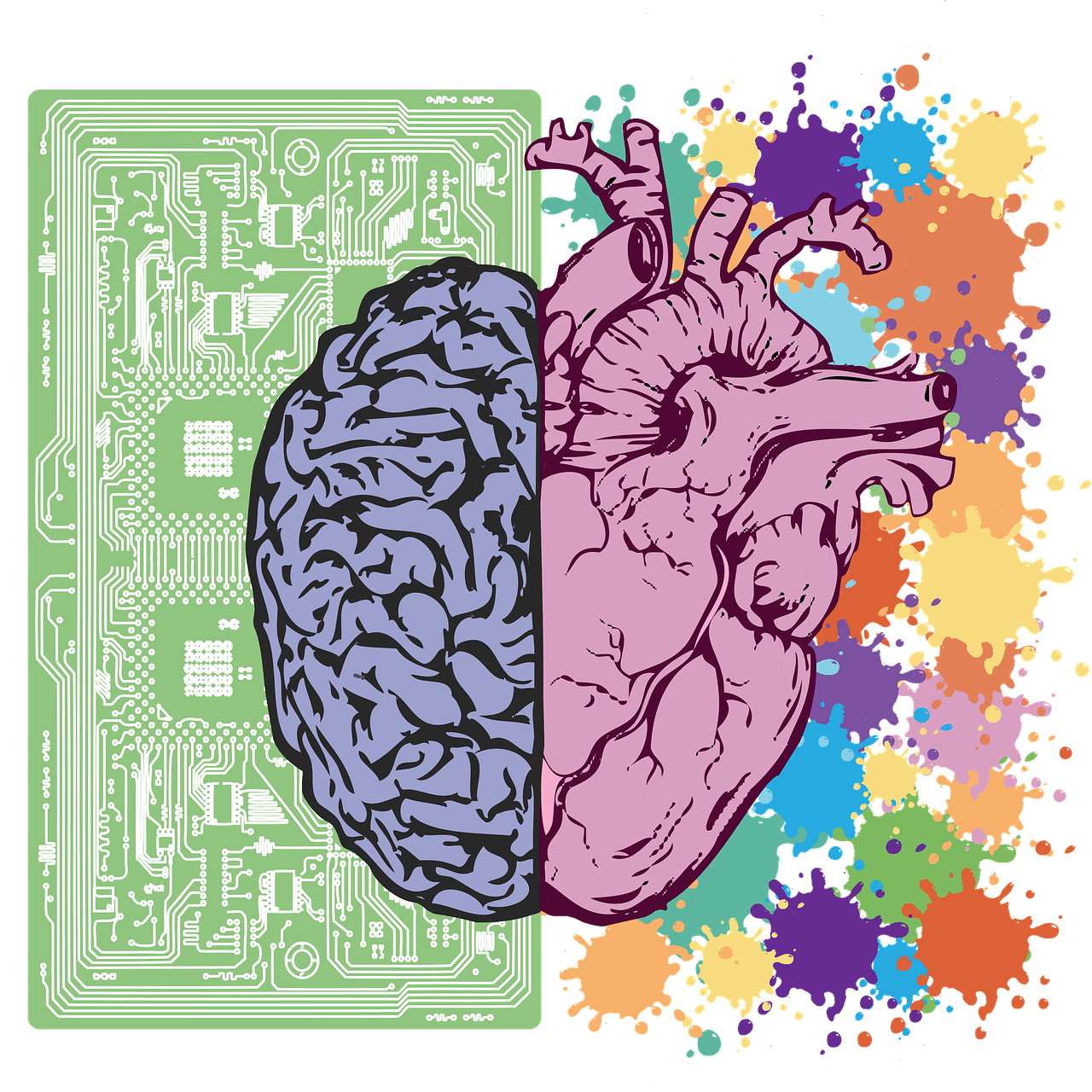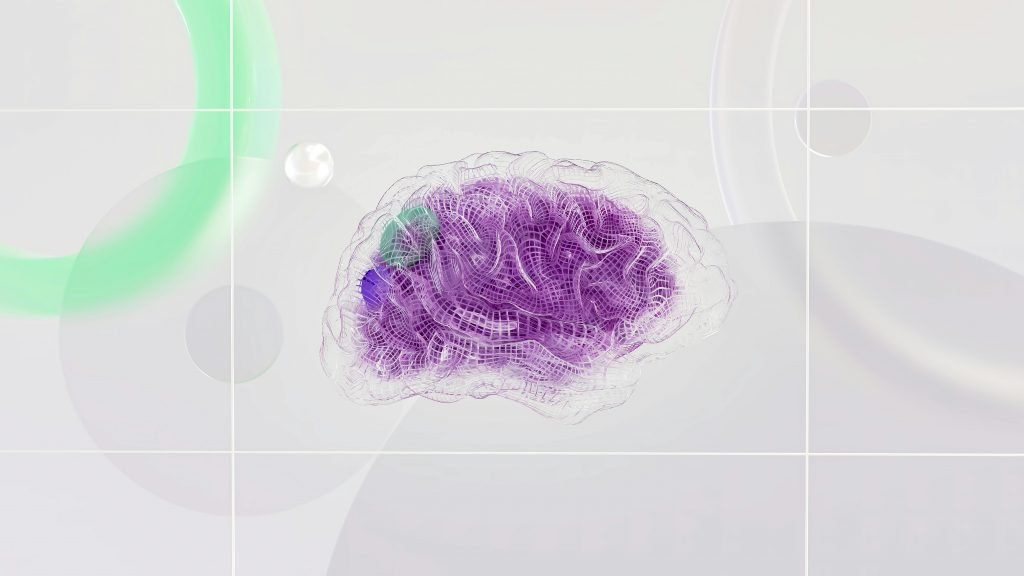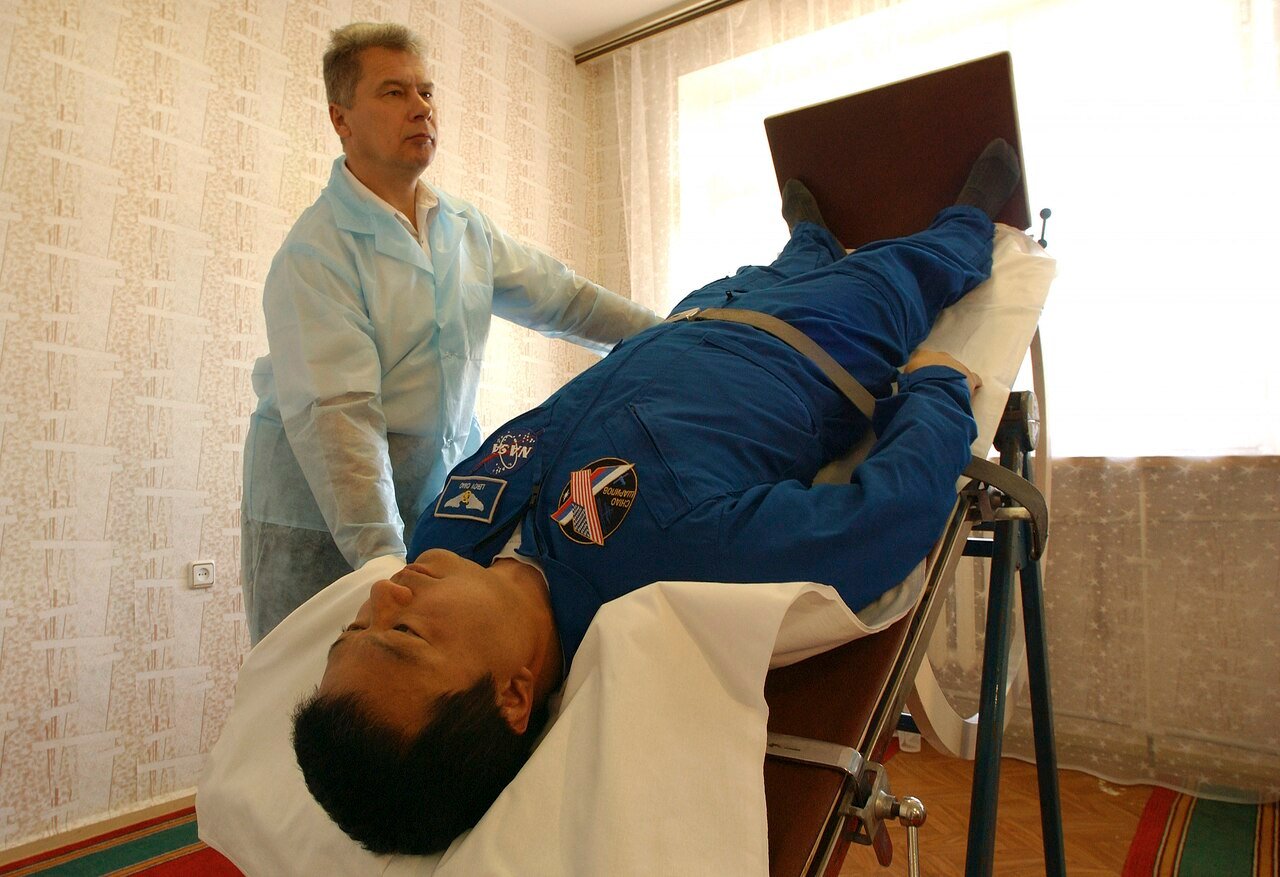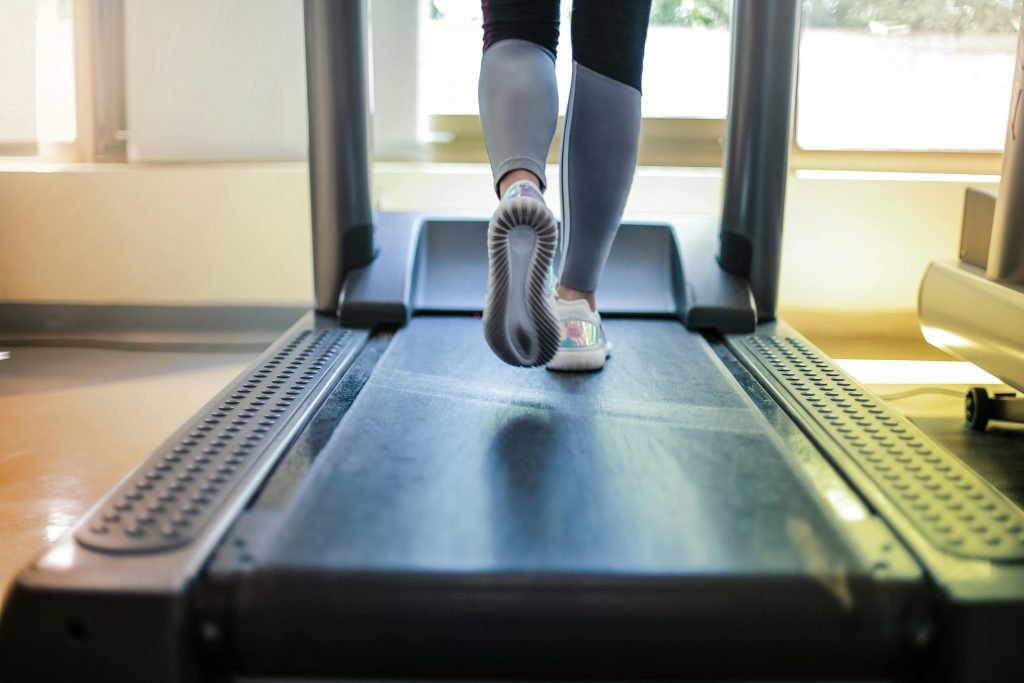Understanding Postural Orthostatic Tachycardia Syndrome
What is POTS? POTS is a disorder of the autonomic nervous system, which controls involuntary bodily functions such as heart rate, blood pressure, and digestion. POTS is a form of dysautonomia, meaning a dysfunction of the autonomic nervous system. It is characterized by an excessive increase in heart rate—usually more than 30 beats per minute (or over 120 bpm total) within 10 minutes of standing—without a corresponding drop in blood pressure. This can lead to a variety of symptoms, from lightheadedness and heart palpitations to fatigue and brain fog.

The Autonomic Nervous System: A Quick Primer
The autonomic nervous system (ANS) is a critical part of your body’s control system, managing involuntary functions that keep you alive and well. It governs processes like heart rate, blood pressure, digestion, body temperature, and respiratory rate—activities that occur automatically without conscious effort. The ANS is divided into two main branches:
- Sympathetic Nervous System (SNS): Often referred to as the “fight or flight” system, it prepares the body to respond to stress by increasing heart rate, dilating airways, and diverting blood flow to muscles.
- Parasympathetic Nervous System (PNS): Known as the “rest and digest” system, it promotes relaxation, reduces heart rate, and aids in digestion and recovery.
Together, these branches maintain a balance, or homeostasis, adjusting to your body’s needs. Dysfunctions in the ANS can lead to conditions like POTS, highlighting its importance in overall health.
Types of POTS
There are several subtypes of POTS, including:
Neuropathic POTS: Caused by nerve damage that impairs blood vessel constriction in the lower limbs
Neuropathic Postural Orthostatic Tachycardia Syndrome (POTS) is a subtype of POTS linked to nerve damage, particularly in the autonomic nervous system. This damage hinders the ability of blood vessels in the lower limbs to constrict properly when a person stands up. As a result, blood pools in the legs, leading to reduced blood flow to the brain and causing symptoms like dizziness, lightheadedness, fatigue, and rapid heartbeat.
Neuropathic POTS can be associated with conditions such as diabetes, autoimmune diseases, or trauma that affects nerve function. Management focuses on improving circulation, which may include wearing compression garments, increasing fluid and salt intake, and incorporating physical therapy. Medications may also help stabilize symptoms. Early diagnosis and tailored treatment are essential for improving quality of life for individuals with this form of POTS.

Hyperadrenergic POTS: Involves an overproduction of norepinephrine, leading to increased heart rate and blood pressure
Hyperadrenergic Postural Orthostatic Tachycardia Syndrome (POTS) is a subtype of POTS characterized by an overproduction of norepinephrine, a stress hormone that regulates the “fight or flight” response. This excess norepinephrine leads to heightened heart rate, elevated blood pressure, and symptoms like palpitations, anxiety, tremors, and sweating when standing up. Individuals with hyperadrenergic POTS may also experience headaches, nausea, and sensitivity to heat.
Triggers for this subtype can include stress, standing for extended periods, and hormonal fluctuations. Diagnosis typically involves measuring norepinephrine levels while standing, alongside other tests for autonomic dysfunction. Management focuses on medications to regulate norepinephrine levels, lifestyle adjustments like increased hydration and salt intake, and compression garments to improve circulation.
Understanding the nuances of hyperadrenergic POTS is crucial for personalized care, as treatment approaches may differ from other POTS subtypes. Research continues to enhance diagnostic and therapeutic options.

Hypovolemic POTS: Related to low blood volume
Hypovolemic Postural Orthostatic Tachycardia Syndrome (POTS) is a subtype of POTS associated with low blood volume. In this condition, the body struggles to maintain adequate circulation when transitioning to an upright position, leading to symptoms such as dizziness, fatigue, rapid heart rate, and fainting. Reduced blood volume exacerbates pooling in the lower extremities, making it harder for blood to return to the heart and brain.
Common causes include dehydration, inadequate salt intake, or issues with blood volume regulation. Management often involves increasing fluid and salt intake, using compression garments to support blood flow, and sometimes medications to boost blood volume or improve vascular tone. Recognizing and addressing hypovolemic POTS is vital for effective symptom management and improved quality of life. Continued research into its causes helps refine treatment approaches tailored to this subtype.

Secondary POTS: Occurs alongside other disorders such as Ehlers-Danlos Syndrome (EDS) or autoimmune diseases
Secondary Postural Orthostatic Tachycardia Syndrome (POTS) develops in conjunction with other underlying conditions, such as Ehlers-Danlos Syndrome (EDS), autoimmune diseases, or diabetes. These primary disorders often contribute to autonomic nervous system dysfunction, impairing the body’s ability to regulate heart rate and blood pressure during posture changes. Symptoms like dizziness, fatigue, brain fog, and rapid heartbeat upon standing are common.
Effective management requires addressing both POTS and the associated condition. Treatment may include medications, physical therapy, lifestyle adjustments, and increased fluid and salt intake to stabilize symptoms. Identifying and treating the underlying disorder is vital for comprehensive care. Secondary POTS highlights the importance of recognizing interconnected conditions to improve quality of life. Advocacy and research into POTS and related disorders drive advancements in diagnosis and treatment options. Early intervention can make a meaningful difference for those affected.

Who Gets POTS?
Postural Orthostatic Tachycardia Syndrome (POTS) can affect individuals of all genders and ages, though it is most commonly diagnosed in teens and young adults, especially females. The condition often arises during periods of hormonal change, such as puberty or pregnancy, and may be associated with underlying conditions like Ehlers-Danlos Syndrome (EDS), Mast Cell Activation Syndrome (MCAS), and autoimmune diseases. POTS is also more prevalent in people with a family history of autonomic disorders or those who have experienced viral infections, trauma, or prolonged bed rest.
While POTS may seem more common in young women, it is not exclusive to them. People of various backgrounds and life stages can develop this condition, making awareness and understanding essential for proper diagnosis and care. If symptoms like dizziness, rapid heartbeat, or fatigue occur, seeking medical advice can lead to effective management and relief.
Symptoms of POTS
POTS symptoms vary widely, but Common symptoms include:
- Rapid increase in heart rate (tachycardia) upon standing.
- Dizziness or lightheadedness, often leading to fainting or near-fainting episodes.
- Chronic fatigue that interferes with daily activities.
- Brain fog or difficulty concentrating.
- Palpitations or a racing heart sensation.
- Nausea, particularly after eating or standing for long periods.
- Cold or discolored extremities, due to blood pooling in the lower limbs.
- Sweating abnormalities, such as excessive or reduced sweating.
- Shortness of breath or chest discomfort.
- Exercise intolerance, feeling unusually fatigued after physical activity.
Symptoms can vary in severity and often worsen in response to dehydration, heat, prolonged standing, or stress. Identifying these signs early and consulting a healthcare provider can lead to better diagnosis and symptom management. If you’ve noticed these patterns, seeking professional guidance is crucial!.
Causes & Triggers of POTS
Postural Orthostatic Tachycardia Syndrome (POTS) is linked to a variety of underlying causes and triggers. While the exact cause is not fully understood, several factors are thought to play a role, including:
Causes:
- Autonomic nervous system dysfunction: POTS stems from irregularities in the system that regulates involuntary body functions like heart rate and blood pressure.
- Conditions like Ehlers-Danlos Syndrome (EDS): Connective tissue disorders may impair vascular function, contributing to POTS.
- Autoimmune factors: Some cases are associated with immune system abnormalities.
- Viral infections or trauma: These can act as initiating events, disrupting normal autonomic function.
- Genetics: A family history may increase susceptibility.
Triggers:
- Dehydration: Insufficient fluid intake can worsen symptoms.
- Hormonal changes: Puberty, pregnancy, or menstrual cycles can exacerbate POTS.
- Prolonged inactivity or bed rest: Leads to deconditioning, which can intensify symptoms.
- Heat exposure: Hot temperatures often trigger dizziness and fainting.
Identifying triggers helps with symptom management and effective care strategies!
Diagnosing POTS
Diagnosing Postural Orthostatic Tachycardia Syndrome (POTS) involves several steps to confirm the condition and rule out other causes of similar symptoms. Here’s an overview of the process:
Medical History & Symptom Review:
- A detailed medical history is taken, focusing on symptoms such as dizziness, rapid heart rate, fatigue, and brain fog.
- Any underlying conditions, family history, or recent viral infections are also considered.
Physical Examination:
- Blood pressure and heart rate are monitored while lying down, sitting, and standing to identify changes.
- An increase in heart rate of at least 30 beats per minute (or 40 bpm in teens) within 10 minutes of standing is a key diagnostic criterion for POTS, without a significant drop in blood pressure.
Tests to Confirm Diagnosis:
- Tilt Table Test: A specialized test to monitor heart rate and blood pressure changes when transitioning from lying down to standing.
- 24-Hour Heart Rate Monitoring: Helps track variations in heart rate throughout the day.
Lab Tests:
- Blood tests to rule out conditions like anemia, thyroid issues, or other causes of symptoms.
- Norepinephrine levels may be checked to identify specific subtypes like hyperadrenergic POTS.
Additional Evaluations:
- Tests for coexisting conditions such as Ehlers-Danlos Syndrome (EDS), Mast Cell Activation Syndrome (MCAS), or autoimmune diseases.
A specialist, such as a cardiologist or neurologist familiar with autonomic disorders, can ensure an accurate diagnosis and develop a tailored management plan. Early diagnosis and proper care can make a significant difference in improving quality of life for those with POTS.

Common Comorbidities
POTS often coexists with:
Ehlers-Danlos Syndrome (especially hypermobile type)
Ehlers-Danlos Syndrome (EDS), particularly the hypermobile type (hEDS), is a connective tissue disorder affecting collagen production. People with hEDS experience joint hypermobility, frequent dislocations, chronic pain, and soft, fragile skin. Other symptoms may include dizziness, gastrointestinal issues, and fatigue. The condition can impact daily life, making movement and stability challenging. Though no cure exists, management focuses on physical therapy, pain relief, and lifestyle adjustments. Early recognition and intervention are key to improving quality of life. hEDS is often underdiagnosed, as genetic testing does not currently identify a specific marker for it. Raising awareness helps those affected receive proper support and care. If you experience persistent joint pain and extreme flexibility, consulting a specialist can lead to better symptom management and overall well-being. Stay informed and advocate for research to enhance understanding and treatment options for Ehlers-Danlos Syndrome.

Mast Cell Activation Syndrome (MCAS)
Mast Cell Activation Syndrome (MCAS) is a disorder where mast cells, a type of immune cell, release excessive chemicals, leading to widespread symptoms. These can include severe allergic reactions, skin issues, digestive problems, respiratory distress, and neurological symptoms like brain fog and anxiety. Unlike typical allergies, MCAS reactions can be unpredictable and triggered by various environmental, food, or stress factors. Because symptoms affect multiple systems, diagnosing MCAS can be challenging. Treatment focuses on identifying triggers, using antihistamines, stabilizing mast cells, and managing inflammation to improve daily life. MCAS often overlaps with conditions like Ehlers-Danlos Syndrome (EDS) and Postural Orthostatic Tachycardia Syndrome (POTS), making awareness and research essential for better care. If unexplained allergic reactions and systemic symptoms persist, consulting a specialist can lead to effective management and relief. Advocacy and education help advance treatment options.
Chronic fatigue syndrome (ME/CFS)
Chronic Fatigue Syndrome (ME/CFS) is a complex and debilitating disorder characterized by extreme, persistent fatigue that doesn’t improve with rest. It affects multiple body systems, often leading to cognitive impairment (“brain fog”), muscle pain, dizziness, and post-exertional malaise—worsening symptoms after physical or mental activity. While the exact cause is unknown, research suggests immune dysfunction, viral infections, and autonomic nervous system issues may play a role. Diagnosis is challenging, as symptoms overlap with other conditions, and there are no definitive tests. Management focuses on pacing, symptom relief, lifestyle adaptations, and addressing coexisting conditions like dysautonomia or fibromyalgia. ME/CFS can significantly impact daily life, making advocacy and research vital for better understanding and treatment options. If prolonged fatigue and systemic symptoms persist, consulting a specialist can help with diagnosis and tailored management strategies. Raising awareness fosters support for those affected.
Autoimmune diseases (e.g., lupus, Sjogren’s syndrome)
Autoimmune diseases occur when the body’s immune system mistakenly attacks healthy tissues, leading to inflammation and various systemic symptoms. Conditions like lupus and Sjögren’s syndrome can affect multiple organs and cause chronic pain, fatigue, and complications ranging from skin rashes to joint stiffness. Lupus is known for its unpredictable flare-ups and potential organ damage, while Sjögren’s primarily targets moisture-producing glands, leading to dry eyes and mouth. Other autoimmune diseases, such as rheumatoid arthritis and multiple sclerosis, vary in severity and progression. Although there is no cure, treatment focuses on managing symptoms through medications, lifestyle adjustments, and immune system regulation. Early diagnosis and proper care can help improve quality of life. Awareness and advocacy drive research for better therapies. If persistent symptoms arise, consulting a specialist can aid in diagnosis and personalized management strategies. Support communities and education help those affected navigate their conditions.
Migraine
Migraine is a neurological disorder characterized by intense, often debilitating headaches accompanied by symptoms such as nausea, sensitivity to light and sound, and visual disturbances. Unlike regular headaches, migraines can last for hours or even days, significantly impacting daily life. Some people experience warning signs, called aura, which may involve flashing lights or tingling sensations before an attack. While the exact cause remains unclear, genetic and environmental factors play a role, with triggers including stress, hormonal changes, certain foods, and sleep disturbances. Treatment focuses on preventing attacks and managing symptoms through lifestyle adjustments, medications, and relaxation techniques. Since migraines can be mistaken for other conditions, proper diagnosis is essential for effective management. If severe headaches persist, consulting a healthcare provider can lead to relief strategies tailored to individual needs. Increased awareness supports research for improved treatment options.
Addressing these comorbidities can improve overall management.
POTS and the Cardiovascular System
Postural Orthostatic Tachycardia Syndrome (POTS) is a condition that affects the cardiovascular system, causing an abnormal increase in heart rate when transitioning from lying down to standing. This dysfunction in the autonomic nervous system leads to symptoms such as dizziness, fainting, rapid heartbeat, fatigue, and brain fog. Blood flow regulation is impaired, making it difficult for the body to maintain proper circulation when upright. POTS often overlaps with conditions like Ehlers-Danlos Syndrome (EDS) and Mast Cell Activation Syndrome (MCAS). Diagnosis involves monitoring heart rate and blood pressure changes during posture shifts. While there is no cure, symptom management includes increased fluid and salt intake, compression garments, medications, and lifestyle adjustments like pacing activities. If you experience persistent lightheadedness or a racing heart when standing, consulting a specialist can aid in diagnosis and personalized care. Advocacy and awareness promote better research and support.
POTS in Daily Life
Everyday activities like showering, standing in line, or climbing stairs can trigger symptoms. Many people with POTS require adaptive tools, pacing strategies, and planned rest to manage basic tasks.
Managing POTS with Lifestyle Changes
Lifestyle changes are a cornerstone of managing Postural Orthostatic Tachycardia Syndrome (POTS), complementing medical treatments to improve daily functioning and overall quality of life. By addressing triggers and building healthy routines, individuals can alleviate symptoms and reduce the frequency of flare-ups.
One of the most effective strategies involves prioritizing hydration and increasing salt intake, which help regulate blood pressure and support circulation. Drinking electrolyte-enriched fluids and incorporating salty foods into meals can make a significant difference. Physical activity also plays an important role, with low-impact exercises such as swimming, recumbent biking, and gentle strength training improving cardiovascular fitness and reducing deconditioning. Gradually increasing exercise intensity over time builds tolerance and resilience.
Structuring your day to include regular breaks and minimizing prolonged standing or exposure to heat can help manage fatigue and dizziness. Wearing compression garments supports blood flow and reduces blood pooling in the lower limbs. Additionally, focusing on good sleep hygiene—like maintaining consistent bedtimes and creating a comfortable sleep environment—can combat the sleep disturbances often associated with POTS.
Mindfulness techniques, such as meditation and breathing exercises, are valuable tools for managing stress, which can exacerbate symptoms. Pairing these practices with a well-balanced diet rich in nutrients further supports physical and mental well-being.
Ultimately, patience and flexibility are key. By fine-tuning your routine and listening to your body’s needs, you can build a lifestyle that empowers you to manage POTS effectively while improving your quality of life.

Nutrition and POTS: What to Eat and Avoid
Nutrition plays a vital role in managing Postural Orthostatic Tachycardia Syndrome (POTS). By tailoring your diet to meet specific needs, you can help stabilize blood pressure, improve energy levels, and reduce symptom flare-ups. Individuals with POTS often benefit from incorporating foods that support hydration, electrolyte balance, and overall health, while avoiding items that may trigger or worsen symptoms.
What to Eat
A diet rich in nutrients can aid symptom management. For hydration, focus on high-fluid foods like cucumbers, watermelon, and soups, alongside plenty of water and electrolyte drinks. Increasing salt intake is often recommended to support blood pressure, and naturally salty options like pickles or olives can complement this strategy. Lean proteins, such as chicken or fish, provide sustained energy, while complex carbohydrates like whole grains stabilize blood sugar levels. Foods rich in potassium—like bananas, avocados, and spinach—help maintain electrolyte balance. Anti-inflammatory options like berries, nuts, and omega-3 sources can combat inflammation often associated with POTS.
What to Avoid
Certain foods can exacerbate POTS symptoms, and minimizing them can be helpful. High-sugar items can lead to rapid blood sugar fluctuations, which may worsen fatigue. Processed foods with hidden sodium imbalances should be avoided, as they might dehydrate rather than stabilize fluids. Similarly, alcohol can aggravate dehydration and reduce blood pressure, leading to dizziness. Caffeinated beverages may increase heart rate or worsen palpitations in some individuals, though others tolerate them well.
A balanced and tailored approach to nutrition, guided by your healthcare provider or dietitian, allows you to focus on foods that work harmoniously with your body’s needs. Tracking dietary patterns alongside symptom changes can also help refine your choices for better management.

POTS-Friendly Recipes
- Appetizer: Olive Tapenade with Whole-Grain Crackers
Rich in sodium and healthy fats, this tapenade gives a quick flavor and electrolyte boost. - Salad: Quinoa, Cucumber, and Feta Bowl
Add chickpeas, olive oil, and sea salt. High in protein, fiber, and hydration-supporting veggies. - Main Dish: Salmon with Roasted Sweet Potatoes
Omega-3s for inflammation, sweet potatoes for potassium, and a dash of Himalayan salt. - Leftovers Hack: Electrolyte Rice Bowl
Use leftover chicken or tofu, stir in seaweed, avocado, and rice with tamari and lemon.

Exercise & POTS: A Delicate Balance
Exercise can play a transformative role in managing Postural Orthostatic Tachycardia Syndrome (POTS), but it requires careful planning and self-awareness. Building strength and cardiovascular fitness helps reduce deconditioning, which often worsens POTS symptoms. For those with POTS, starting with low-impact, recumbent exercises like cycling or swimming can be particularly effective. These activities avoid the challenges of standing-based workouts, minimizing blood pooling in the lower limbs. Over time, gradual increases in intensity and duration allow for improved tolerance and physical resilience.
Strength training, especially focusing on the legs and core, is also beneficial, as it improves circulation and supports posture. Consistency is more important than intensity, and even small, regular efforts can lead to meaningful progress. It’s essential to listen to your body and give yourself permission to rest when symptoms flare up. Hydration and proper recovery play a pivotal role, and exercising in a cool environment can help mitigate heat sensitivity.
Finding joy in movement is equally important. Approaching exercise not as a rigid task but as a way to connect with your body can shift the focus from obligation to empowerment. Everyone’s experience with POTS is unique, so it’s important to tailor your exercise journey to what feels right for you. By taking it slow and working within your limits, exercise becomes not only a tool for symptom management but also a source of strength and self-discovery.

Medications for POTS Management
Managing Postural Orthostatic Tachycardia Syndrome (POTS) often includes medications as part of a broader treatment plan tailored to individual needs. While there’s no one-size-fits-all solution, several types of medications can help alleviate symptoms:
- Beta Blockers: These medications (e.g., propranolol) reduce heart rate and can help with tachycardia.
- Fludrocortisone: A steroid that helps retain salt and water, increasing blood volume and stabilizing blood pressure.
- Midodrine: This vasoconstrictor supports blood vessel contraction, reducing blood pooling in the lower body.
- Ivabradine: Used to specifically lower heart rate without affecting blood pressure.
- Pyridostigmine: Helps improve communication between nerves and muscles, which can enhance blood vessel function.
- Selective Serotonin Reuptake Inhibitors (SSRIs) or Serotonin-Norepinephrine Reuptake Inhibitors (SNRIs): These are sometimes prescribed to regulate the autonomic nervous system.
- Clonidine or Methyldopa: Used in some cases to manage hyperadrenergic POTS by controlling norepinephrine levels.
Important Notes:
- Medications should be prescribed and monitored by a healthcare provider, as responses vary greatly from person to person.
- Lifestyle modifications (hydration, increased salt intake, and physical therapy) are often combined with medications for the best results.
- Periodic reassessment is essential to ensure that treatments align with changing symptoms and needs.
If you’re exploring medication options, it’s important to consult with a specialist experienced in POTS to develop a personalized and effective treatment plan.
Supplements for POTS Symptoms Management
Supplements can play a supportive role in managing Postural Orthostatic Tachycardia Syndrome (POTS), especially when tailored to an individual’s specific needs and symptoms. While they aren’t a replacement for medical treatments or lifestyle changes, certain supplements may help alleviate symptoms or address underlying imbalances. It’s important to consult a healthcare provider before starting any new supplements to ensure safety and effectiveness.
Electrolyte supplements, containing sodium, potassium, and magnesium, can improve hydration and support blood pressure regulation. These are particularly beneficial for individuals with hypovolemic POTS who need to maintain proper electrolyte balance. Vitamin D and iron supplements may be recommended if deficiencies are identified, as these nutrients play a role in energy production and circulatory health. Omega-3 fatty acids, found in fish oil, are valued for their anti-inflammatory properties, which can potentially reduce autonomic dysfunction-related inflammation.
In some cases, Coenzyme Q10 (CoQ10) and B vitamins, especially B12, are considered for their contributions to energy metabolism and nerve function. Magnesium supplements may alleviate symptoms like muscle cramps and fatigue, while adaptogenic herbs, such as ashwagandha, might help balance the stress response in hyperadrenergic POTS.
It’s crucial to approach supplements as part of a broader, individualized management plan, guided by a trusted healthcare professional. Tracking how your body responds to different supplements can help fine-tune your regimen and ensure it aligns with your overall care strategy.
POTS in Teens & Young Adults
Postural Orthostatic Tachycardia Syndrome (POTS) often affects teens and young adults, disrupting daily life during formative years. This autonomic nervous system disorder causes the heart rate to spike upon standing, leading to symptoms like dizziness, fainting, rapid heartbeat, fatigue, and brain fog. In younger individuals, POTS may be linked to growth spurts, hormonal changes, or conditions like Ehlers-Danlos Syndrome (EDS) and Mast Cell Activation Syndrome (MCAS). The symptoms can interfere with school, social activities, and overall quality of life.
Management strategies include staying hydrated, increasing salt intake, wearing compression garments, and pacing physical activities. Medications and tailored physical therapy can also help. With proper care and lifestyle adjustments, many teens and young adults see improvements over time. Early diagnosis and awareness are vital for better symptom management and support during these critical years.
Hormones & POTS: The Female Connection
Hormonal fluctuations play a significant role in Postural Orthostatic Tachycardia Syndrome (POTS), especially among females. Changes in estrogen and progesterone levels, such as during menstruation, pregnancy, and menopause, can impact symptoms like dizziness, fatigue, and rapid heartbeat. These hormonal shifts may affect blood volume, vascular tone, and the autonomic nervous system, intensifying POTS-related challenges. Many females with POTS notice symptom exacerbation during specific phases of their menstrual cycle, highlighting the connection between hormones and cardiovascular regulation.
Management strategies include tracking hormonal patterns, adjusting hydration and salt intake, and seeking tailored treatment options like medications or physical therapy to address fluctuating symptoms. Awareness of the hormonal link empowers women to take proactive steps in managing POTS during hormonal changes. Continued research into this connection is essential for improved therapies and personalized care. Understanding individual triggers helps optimize well-being.
POTS vs Other Dysautonomias
Postural Orthostatic Tachycardia Syndrome (POTS) is one type of dysautonomia, a group of conditions involving dysfunction of the autonomic nervous system (ANS). Dysautonomia affects involuntary functions like heart rate, blood pressure, digestion, and temperature regulation. While POTS primarily manifests as a significant increase in heart rate upon standing, other dysautonomias, such as Neurocardiogenic Syncope (NCS) or Multiple System Atrophy (MSA), present different challenges.
- POTS: Characterized by rapid heartbeat when upright, with symptoms like dizziness, brain fog, and fatigue.
- NCS: Causes fainting due to sudden drops in heart rate and blood pressure.
- MSA: A severe, progressive dysautonomia affecting multiple systems, including motor and autonomic functions.
Diagnoses often overlap, but distinct symptoms set each condition apart. Understanding the specific dysautonomia is essential for personalized care and management strategies. Advocacy drives research for effective treatments and improved quality of life.
Research & the Future of POTS Treatment
The future of Postural Orthostatic Tachycardia Syndrome (POTS) treatment lies in advancing research and innovation to better understand the condition. Current studies aim to uncover the underlying mechanisms of POTS, including its connections to autonomic nervous system dysfunction, genetic factors, and coexisting conditions like Ehlers-Danlos Syndrome (EDS) and Mast Cell Activation Syndrome (MCAS). Improved diagnostic tools, such as biomarkers and advanced imaging techniques, are being explored to facilitate earlier and more accurate identification.
On the treatment front, researchers are investigating new medications to target autonomic dysfunction, alongside personalized approaches like tailored physical therapy and wearable technologies for monitoring symptoms. Advocacy and increased funding are driving efforts to expand awareness and develop targeted therapies. As scientific understanding grows, the future holds promise for more effective management options, better quality of life, and possibly curative breakthroughs for individuals with POTS.
Patient Advocacy & Finding Support
Patient advocacy and finding support are crucial for individuals living with chronic conditions like Postural Orthostatic Tachycardia Syndrome (POTS). Advocacy involves raising awareness, promoting understanding, and ensuring access to resources, research, and proper medical care. By sharing personal experiences, joining advocacy organizations, and supporting research initiatives, patients and their families can drive meaningful change.
Support networks, such as online forums, local support groups, and nonprofit organizations, provide a sense of community and understanding. These spaces allow individuals to share advice, coping strategies, and emotional encouragement. Building a strong support system that includes healthcare providers, loved ones, and peers makes navigating daily challenges more manageable.
Empowering yourself with knowledge about POTS and advocating for your needs can lead to better care and improved quality of life. Together, advocacy and support foster hope and progress for those impacted by chronic conditions.
Social & Work Life with POTS
Living with Postural Orthostatic Tachycardia Syndrome (POTS) can significantly impact social and work life, but with thoughtful strategies, individuals can navigate these challenges effectively. POTS symptoms like fatigue, dizziness, and brain fog may make it difficult to attend social events or maintain a regular work schedule. Open communication is key—sharing your condition with trusted colleagues, friends, or employers can foster understanding and accommodations.
Workplace adjustments, such as flexible hours, ergonomic seating, or the ability to take breaks, can make managing POTS more feasible. In social settings, pacing activities, staying hydrated, and prioritizing rest can help minimize symptom flare-ups. Joining support groups or online communities offers a safe space to share experiences and advice, reducing feelings of isolation.
Building a balance between managing symptoms and maintaining fulfilling relationships is essential. Advocacy and self-care empower individuals to embrace their journey while finding meaningful support in both social and professional spheres.
Long COVID & POTS
Long COVID and Postural Orthostatic Tachycardia Syndrome (POTS) are often linked, as many individuals recovering from COVID-19 report symptoms consistent with autonomic nervous system dysfunction. Long COVID refers to lingering symptoms like fatigue, brain fog, and shortness of breath that persist weeks or months after the initial infection. For some, these symptoms overlap with or include POTS, characterized by a rapid heart rate upon standing, dizziness, and intolerance to prolonged upright positions.
Researchers believe the connection may stem from immune system dysregulation, viral effects on the autonomic nervous system, or inflammation impacting blood flow and vascular function. Diagnosis can be challenging due to overlapping symptoms, but proper recognition is key to symptom management. Treatments involve lifestyle adjustments, hydration, compression garments, and targeted medications.
Ongoing research into Long COVID and POTS aims to uncover the mechanisms behind their relationship, driving progress toward better understanding and treatment options. Awareness and advocacy continue to play a vital role in supporting affected individuals.
Pediatric POTS: Unique Challenges
Pediatric Postural Orthostatic Tachycardia Syndrome (POTS) presents distinct challenges for children and adolescents as they navigate school, social development, and physical growth. Symptoms like dizziness, fatigue, rapid heartbeat, and brain fog can disrupt daily activities, academic performance, and participation in extracurriculars. These challenges often lead to feelings of isolation and frustration.
Proper diagnosis is crucial but can be delayed due to the overlap with other conditions and the variability of symptoms. Management strategies include increased hydration, salt intake, physical therapy, and medications tailored to the child’s needs. In a school setting, accommodations like modified schedules, access to water, or extended breaks can ease the burden.
Families play a vital role in advocating for their children and fostering understanding among educators and peers. With support, early intervention, and awareness, young POTS patients can build resilience and maintain their quality of life despite these challenges.
Navigating the Healthcare System with POTS
Navigating the healthcare system with Postural Orthostatic Tachycardia Syndrome (POTS) can be complex due to the variability of symptoms and limited awareness among medical professionals. Securing an accurate diagnosis often requires persistence and consulting specialists familiar with autonomic disorders, such as cardiologists or neurologists. Keeping detailed records of symptoms, triggers, and medical history is essential for effective communication with healthcare providers.
Building a multidisciplinary care team can help manage the diverse aspects of POTS, including physical therapy, medications, and lifestyle adjustments. Advocacy is vital—educating doctors and advocating for necessary tests or treatments can lead to better outcomes. Utilizing support networks, such as patient organizations and online communities, offers guidance and encouragement.
Navigating insurance coverage and finding POTS-savvy providers can be challenging, but being proactive and informed empowers patients to access the care they need for improved quality of life.
Living with POTS: Mental Health Matters
Living with Postural Orthostatic Tachycardia Syndrome (POTS) can take a toll on mental health, as the chronic nature of the condition often leads to stress, anxiety, and feelings of isolation. The unpredictability of symptoms like dizziness, fatigue, and brain fog can disrupt daily life and strain social relationships, work, and education. Many individuals with POTS experience challenges in coping with the emotional and psychological impact of the condition.
Addressing mental health is a vital part of managing POTS. Seeking support from therapists, joining POTS-specific support groups, and practicing stress-reduction techniques such as mindfulness and deep breathing can improve overall well-being. Building a strong support system of friends, family, and healthcare providers also plays a crucial role. Prioritizing mental health helps individuals with POTS maintain resilience and navigate the challenges of their journey with greater ease.

Building a Support Network
Building a support network is essential when living with Postural Orthostatic Tachycardia Syndrome (POTS) or any chronic condition. A strong network not only provides emotional support but also practical advice and encouragement. Here are some key steps to establish and nurture a robust support system:
1. Family and Friends
- Share your experiences and educate loved ones about POTS to foster understanding.
- Let them know how they can support you, such as by offering companionship or flexibility during tough times.
2. Healthcare Team
- Assemble a team of specialists who understand POTS and its management, including cardiologists, neurologists, and physical therapists.
- Advocate for yourself by discussing your needs and concerns openly during appointments.
3. Support Groups
- Join local or online POTS communities to connect with people who share similar experiences.
- These spaces can provide a sense of belonging, as well as practical tips for navigating daily challenges.
4. Advocacy Organizations
- Reach out to groups dedicated to POTS and dysautonomia awareness. They often offer resources, webinars, and information about the latest research.
5. Workplace and School
- Communicate with employers or educators about your condition and seek accommodations, like flexible schedules or modified tasks.
A support network becomes a foundation for resilience, helping you overcome obstacles and celebrate small victories. Remember, mutual kindness and patience are key in maintaining healthy relationships within your network. You’re not alone—there’s a whole community out there ready to stand by your side!

Managing Flare-Ups & Relapses
Managing flare-ups and relapses with Postural Orthostatic Tachycardia Syndrome (POTS) can feel overwhelming, but a thoughtful approach makes these episodes more manageable. Flare-ups are often triggered by dehydration, overexertion, stress, or exposure to heat, and the severity of symptoms may vary. Taking proactive measures and prioritizing self-care are key strategies for regaining stability during difficult periods.
Rest is essential—during a flare-up, it’s important to pause and let your body recover. Reducing physical and mental demands, creating a calm environment, and focusing on gentle activities can help ease symptoms like dizziness, fatigue, or brain fog. Staying hydrated with fluids that contain electrolytes and increasing salt intake can stabilize blood pressure and circulation, making the recovery process smoother.
If symptoms persist or worsen, leaning on your support network for assistance can be invaluable. Whether it’s family, friends, or healthcare providers, having others to rely on allows you to focus on your health. Tools like compression garments, mobility aids, or cooling packs may also provide relief, depending on your specific symptoms.
During relapses, maintaining a symptom journal is beneficial for identifying patterns, triggers, or management strategies that worked in the past. Sharing these insights with your healthcare team may lead to adjustments in your treatment plan or medications.
Above all, it’s essential to show yourself patience and kindness. Flare-ups are part of the journey, but they don’t define it. With preparation, awareness, and support, navigating relapses becomes an opportunity for growth and resilience. Take things one moment at a time, and never hesitate to seek help if you need it. You’re stronger than you think!
Daily Symptom Tracking & Journaling
Daily symptom tracking and journaling can be invaluable tools for managing Postural Orthostatic Tachycardia Syndrome (POTS) and gaining insights into triggers, patterns, and progress. Here’s how to create an effective tracking routine:
What to Track
- Symptoms: Note severity, timing, and duration of key symptoms like dizziness, fatigue, brain fog, and heart rate changes.
- Activities: Record daily activities and physical exertion levels to identify post-exertional malaise or symptom flare-ups.
- Triggers: Keep track of environmental factors (e.g., heat, stress, dehydration) or dietary elements that may worsen symptoms.
- Vitals: Document blood pressure, heart rate, and hydration levels, especially during postural changes.
- Medications: Log any medications or supplements taken, along with their effects.
- Diet & Hydration: Record food and fluid intake, particularly salt and electrolyte-rich items.
How to Journal
- Use a simple format, such as tables, bullet points, or dedicated tracking apps.
- Include a daily summary reflecting overall well-being and any notable changes.
- Maintain consistency to spot patterns over time.
Why It’s Helpful
- Health Monitoring: Identify trends to adjust treatments or lifestyle habits.
- Healthcare Communication: Share detailed records with doctors for more accurate diagnosis and personalized care.
- Self-Empowerment: Understanding your own condition helps you feel more in control.
Symptom journaling supports proactive management and a deeper understanding of POTS. Ready to give it a go? You could even personalize it with colors or symbols to make the process engaging!
POTS & Sleep Disorders
Sleep disorders are common among individuals with Postural Orthostatic Tachycardia Syndrome (POTS), and they often exacerbate the symptoms of the condition. Some common sleep-related challenges include insomnia, fragmented sleep, and excessive daytime fatigue. The interplay between autonomic dysfunction and poor sleep quality can lead to a vicious cycle, where lack of restorative sleep worsens POTS symptoms like brain fog, fatigue, and dizziness.
Common Sleep Issues with POTS
- Difficulty Falling or Staying Asleep: Disruptions in heart rate and blood pressure regulation during the night can hinder restful sleep.
- Restless Legs Syndrome (RLS): Some individuals with POTS experience uncomfortable sensations in their legs, making it hard to relax.
- Sleep Apnea: Breathing irregularities during sleep may be linked to POTS in some cases.
- Daytime Sleepiness: Non-restorative sleep results in feeling tired even after seemingly adequate hours of sleep.
Tips for Improving Sleep
- Create a Sleep-Friendly Environment: Keep your bedroom cool, dark, and quiet. Use supportive pillows for optimal posture.
- Develop a Consistent Routine: Establish regular sleep and wake times to regulate your body’s rhythm.
- Manage Symptoms Before Bed: Stay hydrated and avoid triggers like dehydration or heat. Elevating your legs may help prevent blood pooling.
- Limit Stimulants: Minimize caffeine and screen exposure in the evening.
- Seek Professional Help: A sleep study or consultation with a sleep specialist may uncover underlying issues like sleep apnea or RLS.
Improving sleep quality is integral to managing POTS, as well-rested individuals often experience fewer symptoms. If poor sleep persists, working closely with healthcare providers can lead to tailored solutions for better rest and overall well-being.
Travel & POTS: Survival Tips
Traveling with Postural Orthostatic Tachycardia Syndrome (POTS) requires preparation and careful planning to minimize symptom flare-ups and ensure a smoother experience. Here are some survival tips for managing POTS while on the go:
- Hydration is key: Carry plenty of water or electrolyte drinks to stay hydrated throughout the journey.
- Salt your snacks: Pack salty snacks to help maintain blood pressure and prevent dizziness.
- Compression wear: Consider using compression socks or garments to support circulation during long periods of sitting.
- Pace yourself: Avoid overexertion by planning rest stops, breaks, and manageable activity levels.
- Pack medications: Bring all prescribed medications and supplements, along with a list of dosages in case of emergencies.
- Comfortable seating: Request accommodations like aisle seats or seating with extra legroom for better posture and mobility.
- Stay cool: Regulate your body temperature with layers or cooling packs, especially if heat triggers symptoms.
Researching destinations, communicating your needs in advance, and allowing extra time for adjustments can make traveling with POTS more manageable and enjoyable. You’ve got this! Safe travels! 🚀
Myths & Misconceptions
There are many myths and misconceptions surrounding Postural Orthostatic Tachycardia Syndrome (POTS), which can lead to misunderstandings and delayed diagnosis for those affected. Here are some common ones:
Myth: POTS is just anxiety or all in your head.
- Reality: POTS is a physiological condition caused by autonomic nervous system dysfunction. While anxiety can sometimes occur due to the condition, it is not the root cause.
Myth: POTS only affects women.
- Reality: While POTS is more common in women, especially young adults, it can affect people of all genders and ages.
Myth: POTS is rare.
- Reality: POTS is underdiagnosed, making it seem rare. Increased awareness has shown it affects a significant number of people.
Myth: There’s nothing you can do for POTS.
- Reality: Management strategies like lifestyle changes, medications, and physical therapy can help improve quality of life.
Addressing these misconceptions is vital for proper support and awareness. Knowledge empowers both patients and their communities!
When to Seek Help
Knowing when to seek help for Postural Orthostatic Tachycardia Syndrome (POTS) is essential for effective management. You should consider consulting a healthcare provider if you experience persistent symptoms such as:
- Frequent dizziness or lightheadedness, particularly when standing up.
- A rapid increase in heart rate upon standing, often accompanied by palpitations.
- Chronic fatigue that interferes with daily life.
- Brain fog or difficulty concentrating.
- Fainting or near-fainting episodes.
Symptoms impacting your ability to work, attend school, or participate in social activities warrant medical attention. Early evaluation by a specialist, such as a cardiologist or neurologist familiar with autonomic disorders, can provide a proper diagnosis and tailored treatment plan.
Additionally, if symptoms suddenly worsen or new, unexplained ones arise, seeking prompt medical advice ensures better outcomes and prevents potential complications. Don’t hesitate to advocate for your health and find support when needed!
Frequently Asked Questions About POTS
What is POTS Dysautonomia? POTS is a type of dysautonomia where the heart rate increases abnormally upon standing, often leading to dizziness, fatigue, and other symptoms.
Can POTS be cured? While there isn’t a cure at this time, many individuals experience improvement through tailored lifestyle adjustments and medication.
Is POTS the same as anxiety? No. Although POTS symptoms may resemble anxiety, they are caused by dysfunction in the autonomic nervous system rather than mental health issues.
How is POTS diagnosed? Diagnosis typically involves a tilt-table test or active stand test, which measures heart rate changes when moving from a lying to a standing position.
What causes POTS? It can develop after illness, physical trauma, genetic predisposition, or autoimmune dysfunction.
What foods are beneficial for POTS? A diet rich in salty foods, potassium-packed fruits and vegetables, lean proteins, and ample water can be particularly helpful.
Can teenagers have POTS? Yes, POTS is quite common among teens and young adults, often manifesting during puberty.
Is exercise good for POTS? Exercise can be highly beneficial when done carefully. Starting with low-impact, recumbent activities and gradually increasing intensity is key.
Does POTS affect mental health? While POTS primarily affects the autonomic nervous system, its symptoms can lead to secondary mental health concerns, such as anxiety or depression.
Can people with POTS lead normal lives? Yes! With proper management and care, many individuals with POTS go on to live fulfilling and active lives.
Final Thoughts
Living with Postural Orthostatic Tachycardia Syndrome (POTS) can be a challenging journey, but it’s important to remember the strength and resilience you carry within. Every step forward, no matter how small, is a testament to your courage and determination. Though symptoms may test your patience, the future holds promise with advancing research, growing awareness, and an ever-expanding community of support.
You are not defined by your condition but by the spirit with which you face it. Celebrate your victories, even on the days when simply standing up feels like an achievement. Lean on your support network, educate yourself, and advocate for your needs—because your voice and experiences matter. Together, you and others affected by POTS are paving the way for progress and better understanding.
Above all, be kind to yourself and take things one day at a time. With self-compassion and hope, brighter days are always within reach. You’ve got this! 💙



